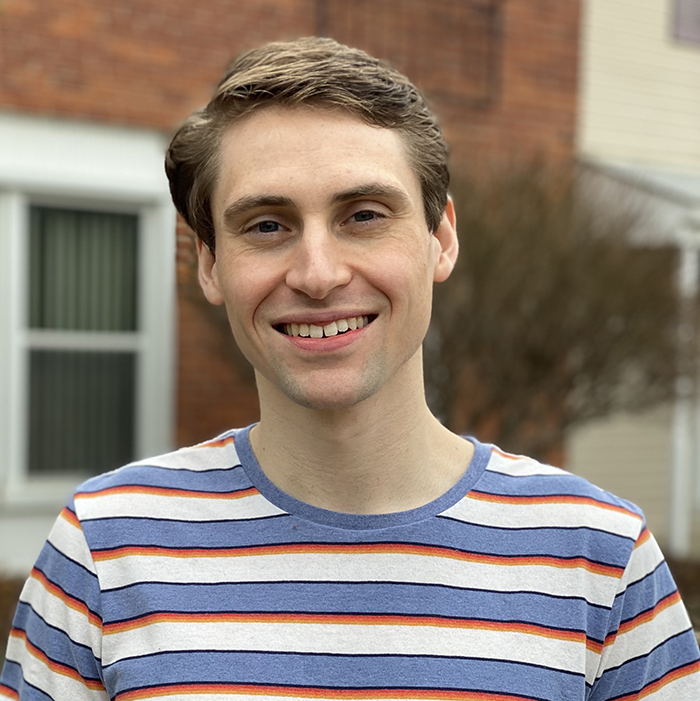Cody Scarborough wins Best Student Paper Award at Metamaterials 2021

PhD student Cody Scarborough has won the Best Student Paper Award at Metamaterials 2021 – The 15th International Congress on Artificial Materials for Novel Wave Phenomena – for developing a more efficient method to convert signals to high frequencies. This research could facilitate breakthroughs for applications that require low power and low noise, such as low power communication, radio astronomy, and radar.
In a wireless link, a “baseband signal” that carries information has to be encoded onto a radiated electromagnetic wave. This is accomplished by translating the baseband signal upwards in frequency through a process known as mixing. With advances in communication technology; the radiation frequency of wireless links has been pushed upwards, well into the millimeter regime. As a result, devices built for mixing must be capable of dramatically frequency-translating a baseband signal.
An essential ingredient to frequency mixing is a modulation signal. The modulation signal is generally produced by an on-chip clock. When the required frequency shift is beyond the frequency of the on-chip clock, devices known as subharmonic mixers are often employed.
“Normally, to generate very high frequencies, you use a nonlinear element to produce a pile of frequency harmonics,” Scarborough said. “Then you simply pick off the harmonic at the desired frequency. But it’s a very inefficient process because you lose energy to undesired frequencies.”
In this research, Scarborough applied traveling-wave modulation to an array of nonlinear elements attached to a simple wire antenna. Rather than generating multiple harmonics, the unique properties of traveling-wave modulation ensures that power is radiated solely at the targeted output frequency.
“The number of elements in your array tells you the multiplication factor of your frequency shift. If you have five elements, then the shift is five times your modulation frequency. If you have three elements, then you multiply by three,” Scarborough said. “Our method demonstrated a 200-400% improvement over typical conversion technologies.”
Our method demonstrated a 200-400% improvement over typical conversion technologies.
Cody Scarborough
Scarborough’s team is now looking into the application of traveling-wave modulation to parametric amplifiers. Their aim is to reduce their required modulation frequency, which currently must be higher than that of the input signal itself.
The paper is entitled, “Efficient Subharmonic Frequency Conversion Using Space-Time Induced Bound States in the Continuum.”
Scarborough previously won the Exceptional Student Contributions Award at Metamaterials 2020, and the Best Student Paper Award at the European Conference on Antennas and Propagation (EuCAP) where he was also a finalist for the Best Electromagnetics Paper Award. He is advised by Prof. Anthony Grbic.
The symmetry properties of spatially-discrete traveling-wave modulation which were invoked in the construction of Scarborough’s subharmonic mixer antenna are detailed in their recent paper “Efficient Computation of Spatially-Discrete Traveling-Wave Modulated Structures,” in IEEE Transactions on Antennas and Propagation.

 MENU
MENU 
